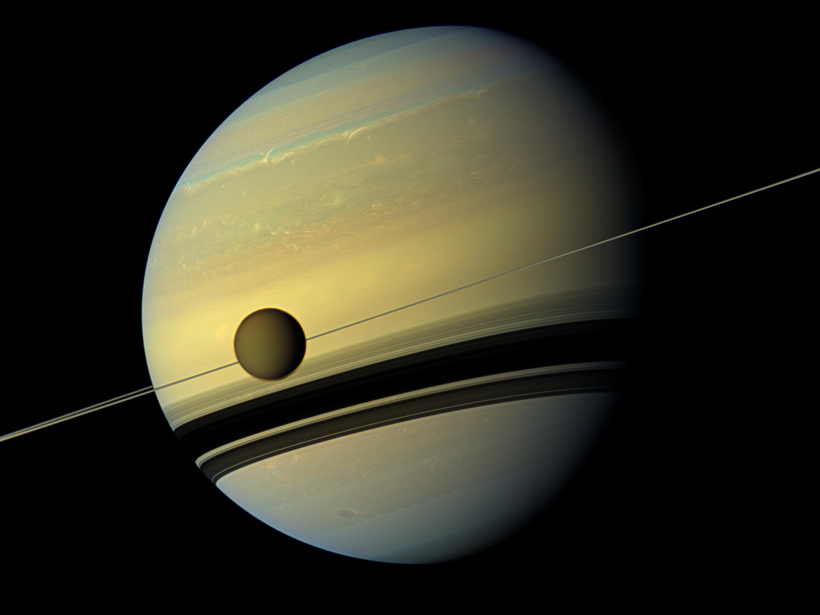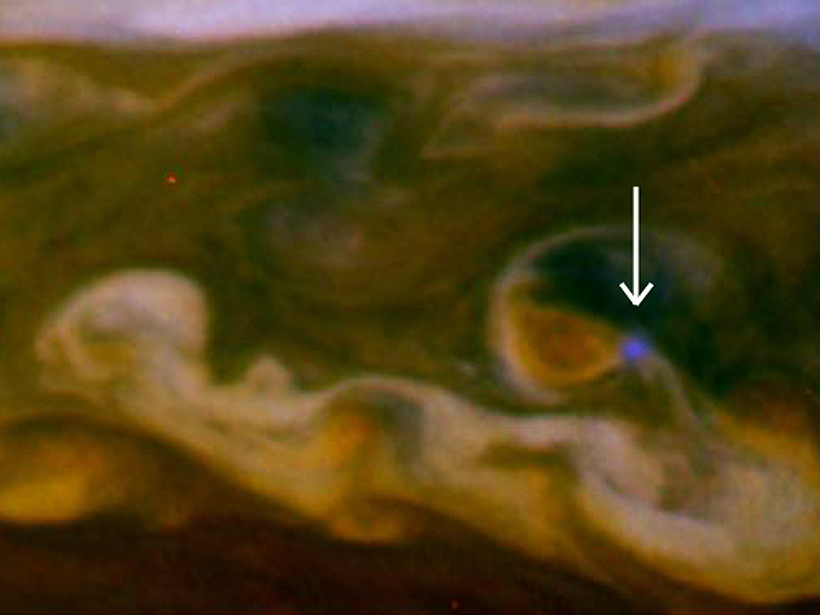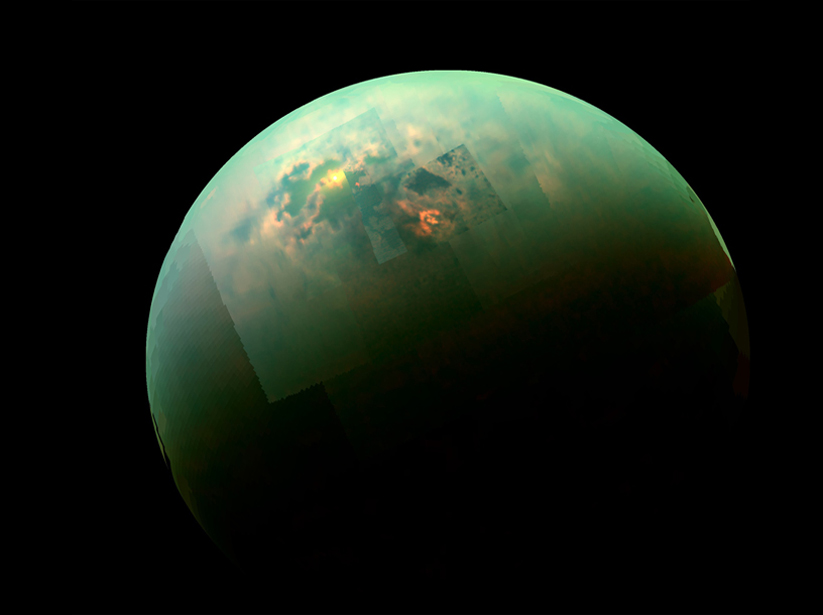Scientists use very low and low-frequency radio signals to detect short gamma ray bursts and their impact on the low ionosphere.
ionospheres
New GPS Satellite Technique to Monitor Ionospheric Disturbances
Researchers are developing better ways to use satellites to understand space weather events that can interfere with technology.
Half of Atmospheric Joule Heating Is Due to Small Oscillations
Scientists use sounding rockets to show that small oscillations in electric fields can be just as important for atmospheric Joule heating as the presence of the electric field itself.
How Saturn Alters the Ionosphere of Titan
New research shows that Saturn's powerful magnetic field changes the atmospheric chemistry of its largest moon, Titan.
Andrew F. Nagy Receives 2015 John Adam Fleming Medal
Andrew F. Nagy was awarded the 2015 John Adam Fleming Medal at the American Geophysical Union Fall Meeting Honors Ceremony, held on 16 December 2015 in San Francisco, Calif. The medal is for "original research and technical leadership in geomagnetism, atmospheric electricity, aeronomy, space physics, and related sciences."
An Ionospheric Index to Predict Earthquakes Falls Short
Scientists disagree about the validity of the spatial scintillation index, a tool that aims to forecast earthquakes based on atmospheric disturbances.
First Results from the MAVEN Mission to Mars
Geophysical Research Letters publishes First Results from the MAVEN Mission to Mars, demonstrating a remarkable achievement of NASA's MAVEN team and the broader scientific community.
Mayyasi-Matta Receives the 2015 Fred L. Scarf Award
Majd Mayyasi-Matta will receive the Fred L. Scarf Award. She will be formally presented with the award at the 2015 American Geophysical Union Fall Meeting, to be held 14–18 December in San Francisco, Calif.
Gaseous Planets May Have Huge Luminous Rings Caused by Lightning
What business do elves have in the upper atmospheres of gas giants? Plenty, it seems. The enormous ring-shaped phenomena triggered by lightning may occur on Jupiter, Saturn, and exoplanets.
What’s Driving Titan’s Atmosphere?
A new analysis of Cassini data reveals a major source of heavy hydrocarbons on Saturn’s moon Titan.





